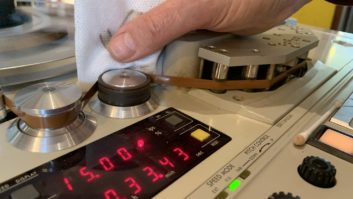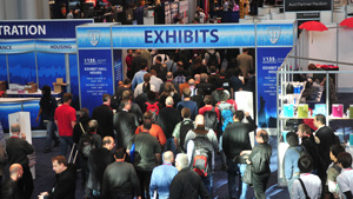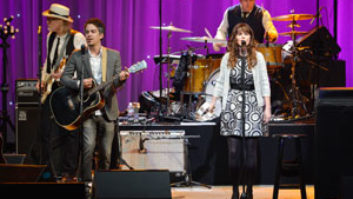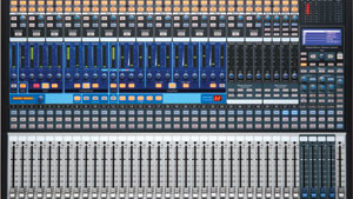JoeMeek gear always evokes an inner chuckle from me when I see and use those striking green-faced units. And their namesake’s philosophy-“If it sounds right, it is right!”-inspires the attitude, feel, operation and sound of all JoeMeek products. The SC4 is the latest stereo compressor from designer and Meek’s studio cohort, Ted Fletcher. I am attracted to this unit because, as with other JoeMeek processors, a common recording process is done differently for purposeful effect.
Rather than the usual stereo compressor approach of two mono compressors with interlinking, audio coming into the SC4 is converted or coded into Middle and Side signal components. The two M/S signals are individually compressed and coded back to a standard stereo for output. In M/S recording from a single point in a room, two microphones are used: An in-phase cardioid microphone (the Mid or Sum mic) is pointed at the sound source, and a figure-eight mic (the Side or Difference mic) is then placed at a right angle to the sound source so that the two lobes (out of phase with each other) of the pattern pick up sounds to the side. These microphones are recorded on separate tracks and subsequently combined by matrix circuitry to produce a phase-coherent stereo sound image. M/S or Sum/Difference recording is not new but has been gaining popularity.
Features and functionsThe two-rackspace SC4 comes in a steel chassis with XLR inputs and outputs. A “DAD” option adds onboard 24-bit A/D and D/A converters with AES/EBu (XLR) and S/PDIF (optical) digital I/o. These 1-bit, 128x oversampled converters are switchable to 44.1/48kHz operation, providing a 115dB dynamic range and a frequency response that’s only down -1 dB at 22.5 kHz in the 48kHz setting. A Local/Remote Sync switch sets up the unit as the master clock source or as a slave to incoming digital clocks, although there are no separate word clock I/o connectors.
The SC4’s main XLR analog inputs/outputs are electronically balanced (no transformers) with the input impedance at 20k ohms; the output can drive load impedances down to 75 ohms. Maximum input level is +28 dBu and maximum output level is +26 dBu. Also on the rear panel are unbalanced 11/44-inch jacks for inserting outboard gear (such as an equalizer) before the compressor. And an M/S Input button on the front panel bypasses the M/S encoder for directly connecting to the output of outboard mic preamplifiers with M/S microphones or line level prerecorded M/S recordings or encoded track pairs. Speaking of bypass, the In/out push-button toggles the compression sidechain on and off so there’s no hardwire bypass.
Metering is provided by two large, lighted Vu meters: The left meter indicates a sum of left and right output levels before makeup gain adjustment, making its purpose frivolous except for measuring input level when the unit is switched to bypass; the right meter indicates an L+R summation of gain reduction. These meters should be labeled, as two closely spaced Vus usually indicate left and right input/output levels and gain reduction.
Despite the SC4’s different processing approach, the unit operates much the same as any other stereo compressor. I like the big, center-detented input control (offering up to 18 dB of additional gain) as well as the 6 dB of makeup gain on the detented output control. And when these are turned fully counterclockwise, no audio passes through either section-I also like that. Compression threshold for both the Mid and Side signals is controlled by a single Compression control that ranges from off to maximum, and a five-position Slope control sets the compression ratio, to a maximum of about 8:1. JoeMeek compressors use a nonlinear compression slope that changes with level.
The Attack control ranges from 0.5 ms to 10 ms while the time values for the Release control are marked as 0.25 to 2.5 seconds. However, it is difficult to quantify the exact release time in JoeMeek units. According to the manual, the unit uses a compound release circuit that reacts quickly to short bursts of volume, and less quickly to sustained volume, which helps maintain the transparency of the sound.
The SC4’s Width control is my favorite feature. Width controls the Side signal or the level of the ambient sound information after the M/S is decoded back to stereo. Stereo width control is an important tool when mixing, as you can adjust the perceived lateral “size” of a stereo image. The center-detented point provides 100% of the normal stereo width. Fully counterclockwise is full mono, and in the 200% fully clockwise position, the Side signal is twice as loud as in normal stereo, offering plenty of width adjustment without mono compatibility worries.
Making it funIn session, the SC4’s Width control was valuable for adjusting the relative size of different stereo instrument/vocal recordings within a final master stereo mix. When combining numerous stereo pairs of strings, backing vocals, acoustic pianos, pads or drum kits-perhaps with just too much aggregate stereo spreading-all this excessive width information in a pop music mix can end up sounding washed out and blurred and lack a solid center mono component. A simple fix to this problem is to collapse the left and right channels of a stereo pair with panpots, but this builds the center up and reduces ambience. Adjusting the M/S matrix offers a more careful method with its main use for increasing width. Adding stereo width by increasing the Side signal will open up the sound, exposing more of the ambient information-whether natural or artificially added.
The SC4 is easy and fun to use. A very noncritical approach should be taken when using this unit, which I believe contributes to the whole line’s popularity. I found it easy to compress anything from stereo pads and keyboards to vocals and full mixes. If you use the unit for a single mono source, I suggest sending the source to both inputs and then summing or mixing the two outputs together. I used the SC4 for a stereo mix where I was looking for a “rubbery” special-effect compression. The sound of the unit is non-transparent, chunky, thick and smooth -perfect for use with thin, excessively bright productions. The sound reminds me of the little old British Pye compressor that I bet Meek used himself. Control over Width was handy for widening and bringing out more ambience from a stereo string section recording made in an apparently dry room. This was a case in which I used a Slope of 1 and very little squash: I was mainly interested in cranking the width up to hear more of that dry room.
The JoeMeek SC4 is priced at $2,000, and the DAD DC4 digital interface board is $300. Clearly, this box is my favorite from JM, and with its unique, alternative compressor sound and simple, effective way to manipulate M/S, the SC4 is a worthy addition to any outboard rack.
Distributed by PMI Audio, 23773 Madison St., Torrance, CA 90505; 310/373-9129; fax 310/373-4714; www.pmiaudio.com.






